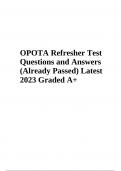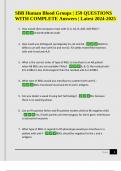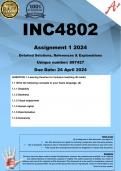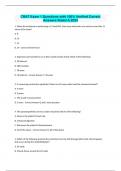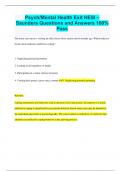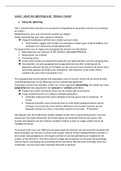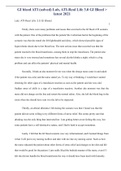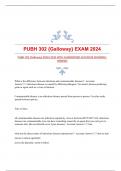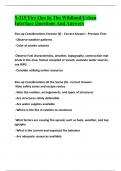ACTIVITY 1 Learners should not only learn about the environment but should also be
active participants in the learning situations in environmental education processes. Your
answer should reflect the process of active learning process by Rosenberg et al. (2013).
In your discussion, clearly indicate the programs that you can initiate to promote
problem solving and critical thinking and how you keep learners engaged in the whole
process of teaching and learning. 1.1 Explain your role in promoting the following: a.
Problem solving (5) b. Critical thinking (5) [Total: 10 Marks]
Active Learning Process by Rosenberg et al. (2013)
Active learning involves engaging students directly in the learning process, encouraging them to
participate actively rather than passively receiving information. This method is crucial in
environmental education as it helps learners to better understand and appreciate the
complexities of environmental issues. Rosenberg et al. (2013) outline several key components
of active learning:
1. Engagement: Learners are actively involved in the learning process through hands-on
activities, discussions, and collaborative work.
2. Exploration: Learners explore concepts and problems, often through inquiry-based
learning where they ask questions, investigate solutions, and discover knowledge.
3. Explanation: Learners explain their understanding and reasoning, helping to
consolidate their knowledge and deepen their comprehension.
4. Elaboration: Learners apply their knowledge to new situations, further extending their
understanding and abilities.
5. Evaluation: Learners assess their understanding and skills, often through reflective
activities and self-assessment.
1.1 Explain Your Role in Promoting:
a. Problem Solving (5 Marks)
As an educator, your role in promoting problem-solving skills involves creating an environment
where students are encouraged to tackle real-world environmental issues and develop
solutions. Here are some strategies and programs you can initiate:
1. Project-Based Learning: Develop projects where students identify local environmental
problems, such as water pollution or waste management, and work in groups to propose
and implement solutions. For example, a school recycling program where students
manage waste segregation and recycling initiatives.
, 2. Inquiry-Based Activities: Pose open-ended questions related to environmental issues
and guide students through the process of investigating and finding answers. For
instance, "How can we reduce the carbon footprint of our school?"
3. Case Studies: Use real-life case studies of environmental problems and ask students to
analyze the situations and propose solutions. This method helps students to apply their
theoretical knowledge to practical scenarios.
4. Collaborative Learning: Encourage group work and peer collaboration where students
can brainstorm, discuss, and solve environmental problems together. This approach not
only enhances problem-solving skills but also fosters teamwork and communication.
5. Simulation Games: Implement simulation games that mimic environmental challenges
and require students to make decisions and solve problems within the game. These
games can provide a safe space for students to experiment with different solutions and
see the outcomes of their choices.
b. Critical Thinking (5 Marks)
Promoting critical thinking involves helping students to analyze, evaluate, and synthesize
information related to environmental education. Here are some strategies and programs to
enhance critical thinking:
1. Debates and Discussions: Organize debates and discussions on controversial
environmental topics, such as climate change, deforestation, or renewable energy.
Encourage students to research both sides of the argument and present their findings.
2. Socratic Questioning: Use Socratic questioning techniques to challenge students'
assumptions and encourage deeper thinking. Ask probing questions like, "What
evidence supports this claim?" or "What are the potential consequences of this action?"
3. Reflection Activities: Implement reflective activities where students analyze their
learning experiences and think about how they can apply their knowledge to new
situations. This could include journaling or reflective essays on environmental field trips
or projects.
4. Critical Analysis of Media: Teach students to critically analyze media reports on
environmental issues. Have them evaluate the credibility of sources, identify biases, and
compare different viewpoints.
5. Problem-Based Learning (PBL): Engage students in PBL where they are given
complex, real-world problems to solve without predefined solutions. This method
encourages them to research, evaluate information, and develop well-reasoned
solutions.
Conclusion
In promoting both problem-solving and critical thinking, your role as an educator is to facilitate
an active learning environment where students are engaged, challenged, and supported
throughout the learning process. By implementing the strategies and programs outlined above,
you can help learners become active participants in their environmental education, ultimately
fostering a deeper understanding and commitment to solving environmental issues.

